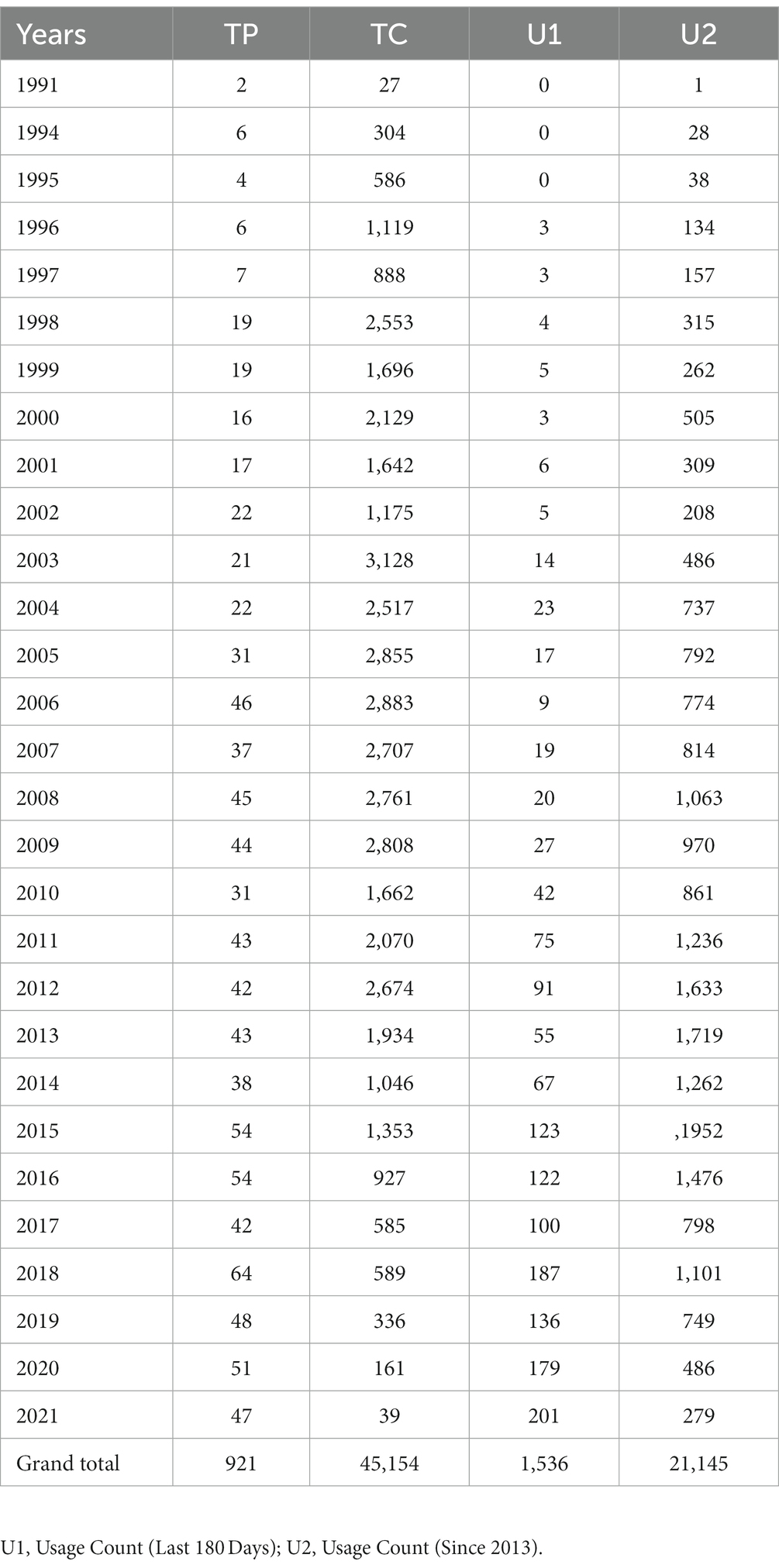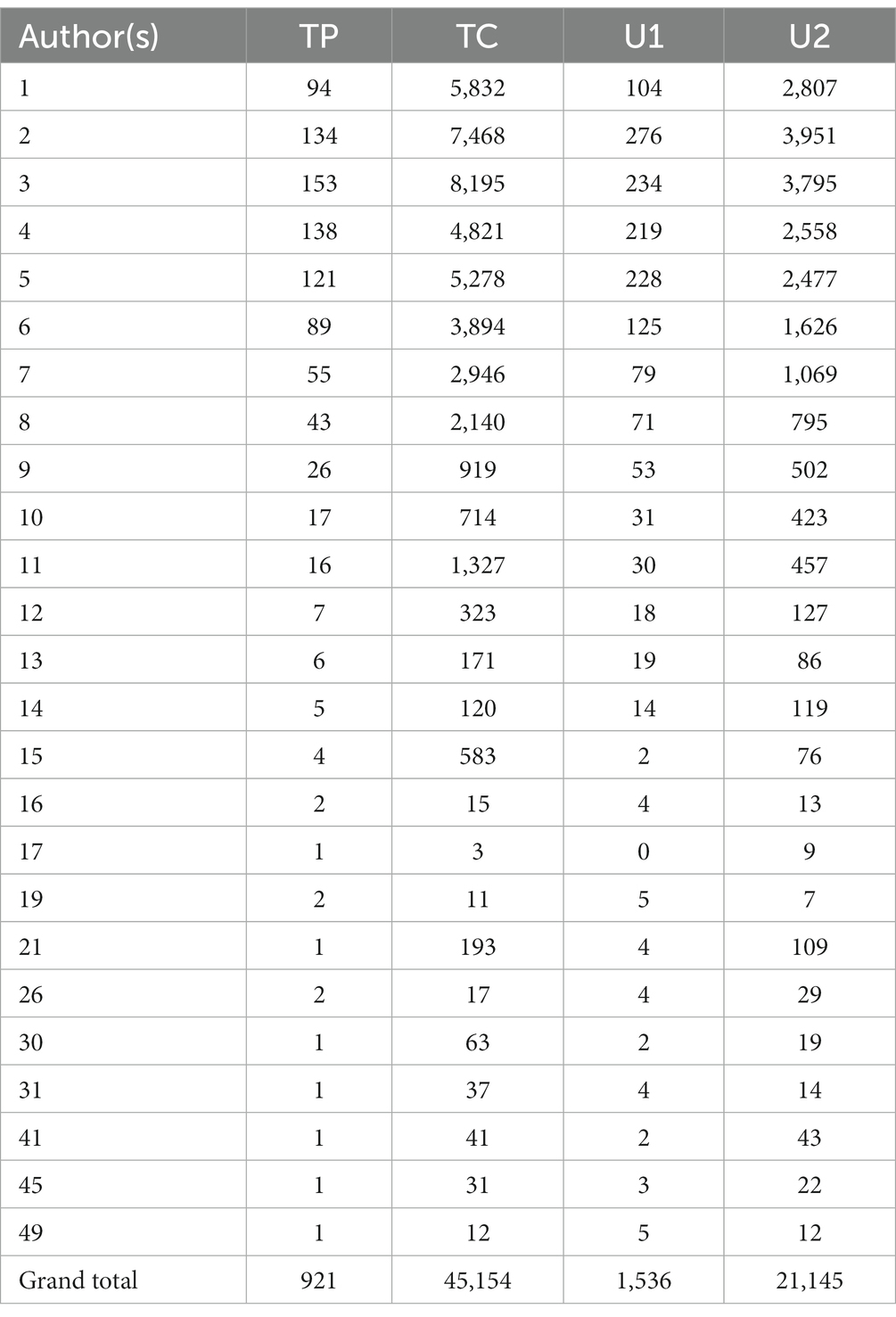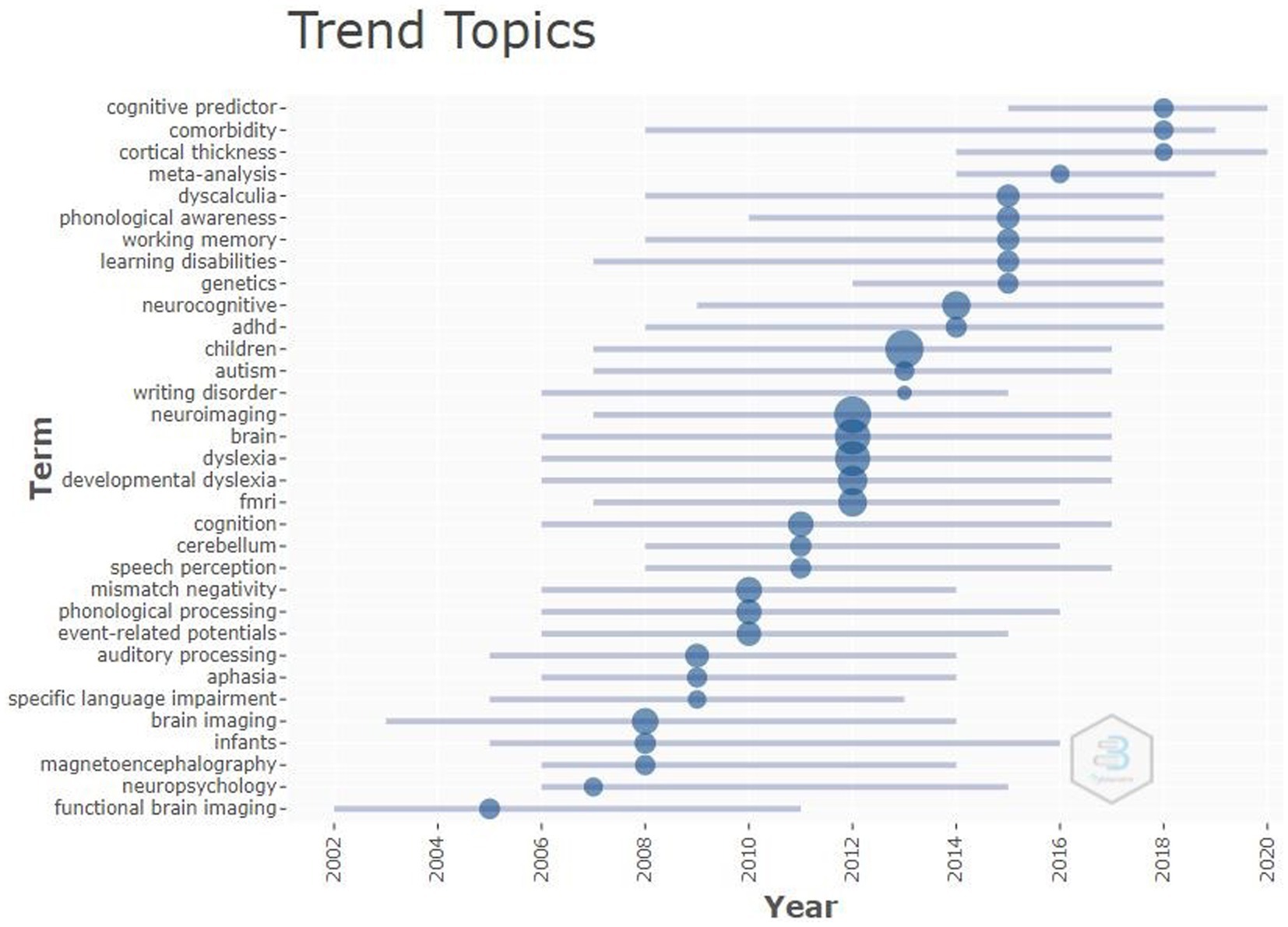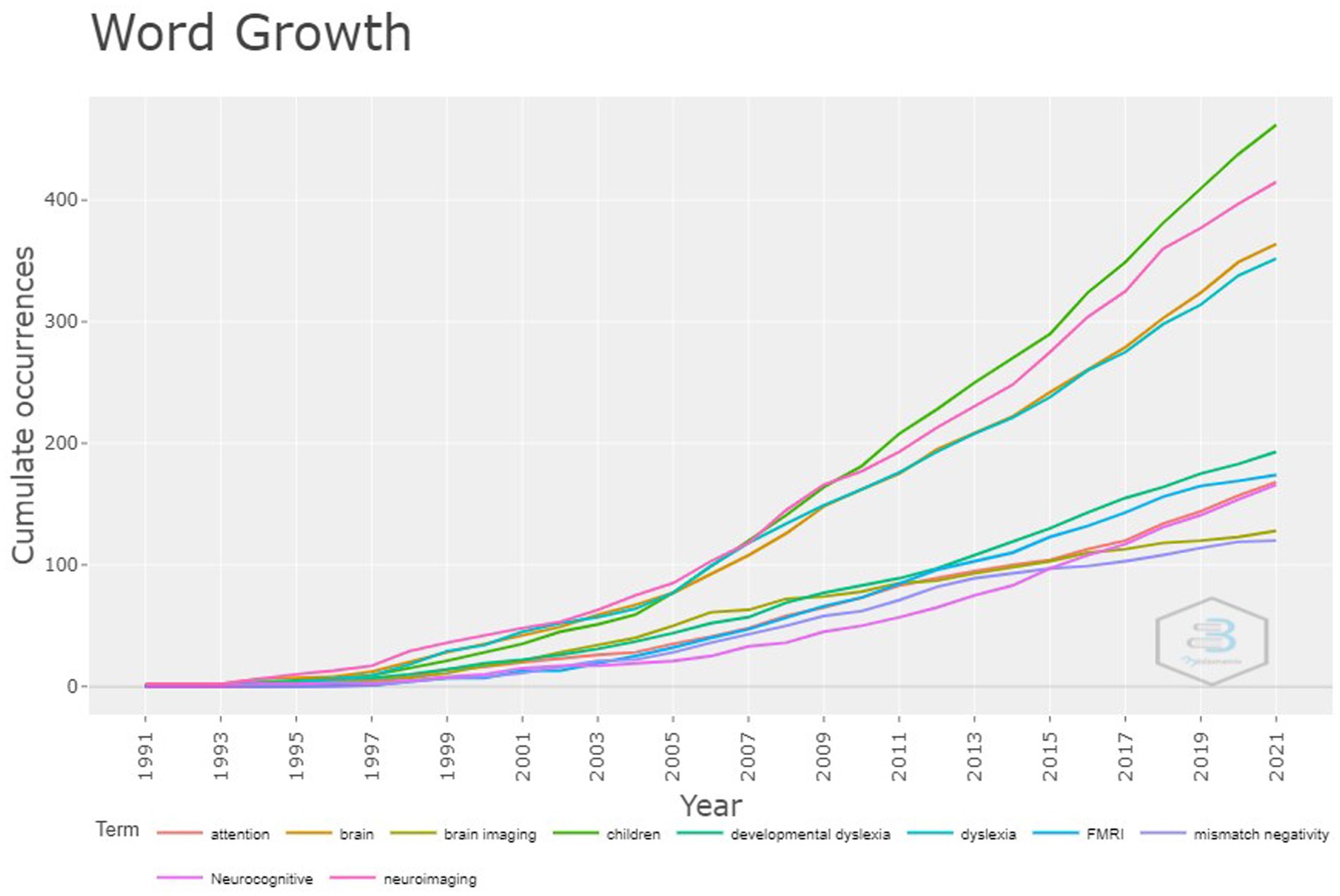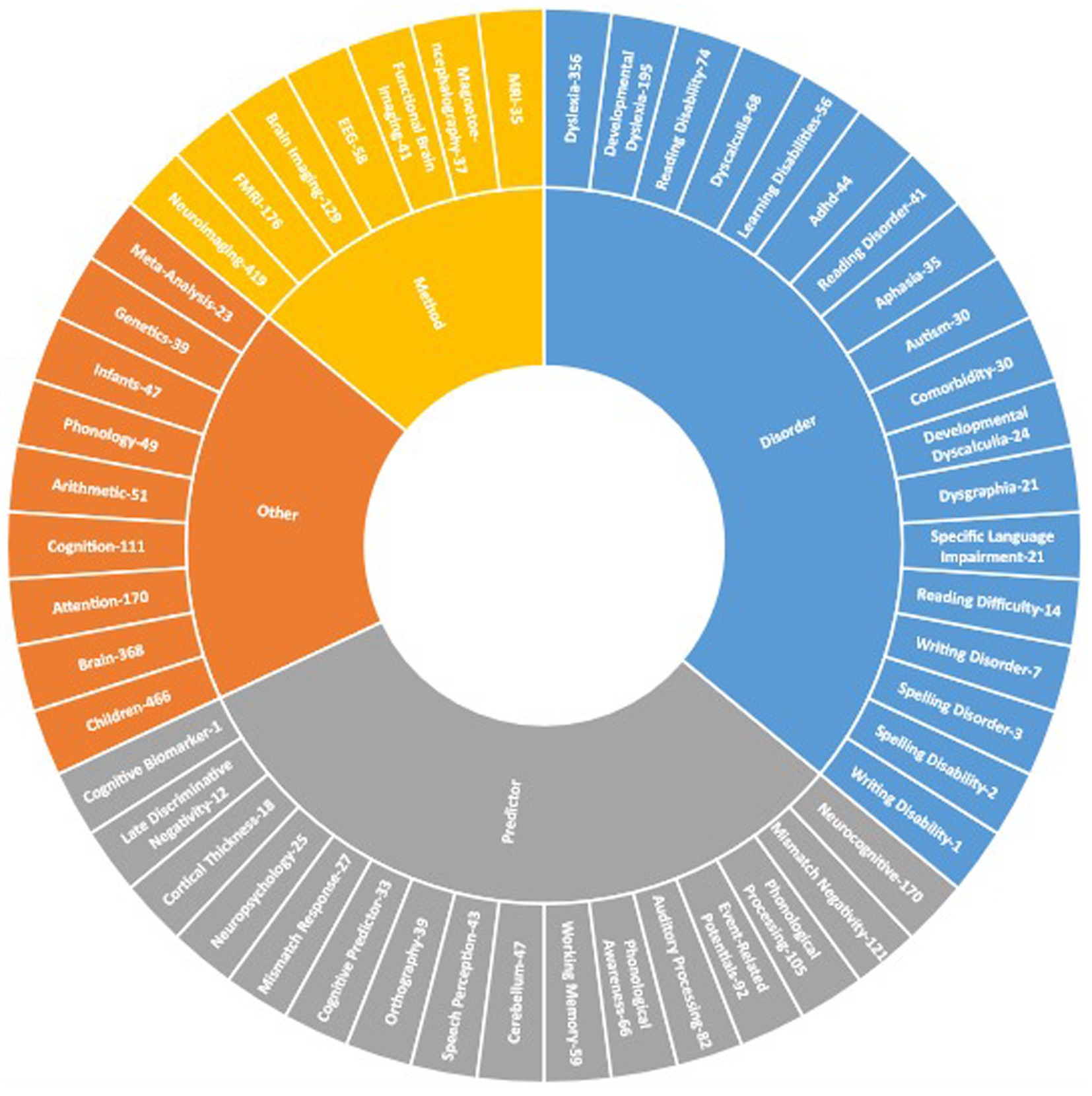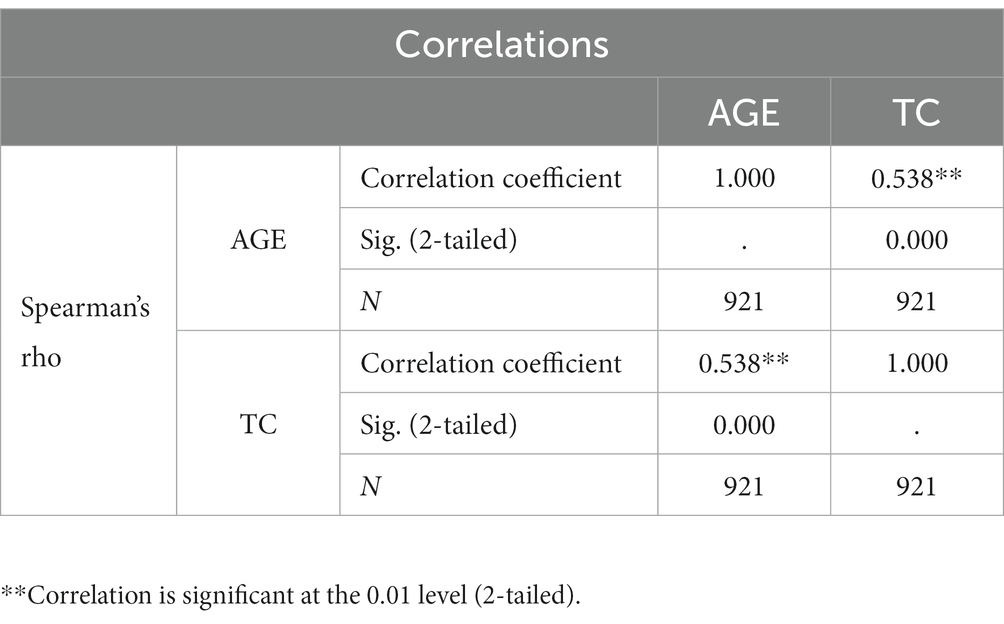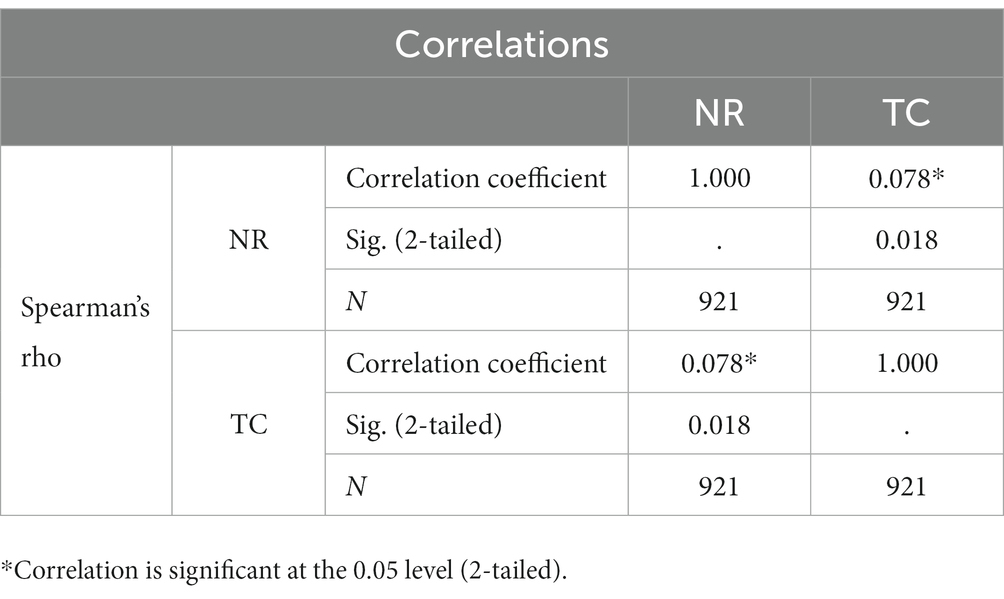- 1Department of Medical Rehabilitation and Long-Term Care, Al-Ahsa Health Cluster, Al-Ahsa, Saudi Arabia
- 2College of Applied Medical Sciences, Imam Abdulrahman Bin Faisal University, Dammam, Saudi Arabia
- 3Deanship of Library Affairs, Imam Abdulrahman Bin Faisal University, Dammam, Saudi Arabia
- 4Library Department, Lahore University of Management Sciences, Lahore, Pakistan
- 5Neuroscience Center, King Fahad Specialist Hospital, Dammam, Saudi Arabia
Introduction: Language-based learning disabilities (LBLD) refers to a spectrum of neurodevelopmental-associated disorders that are characterized by cognitive and behavioral differences in comprehending, processing and utilizing spoken and/or written language. The focus of this work was on identifying early predictors of three main specific LBLD including dyslexia, dyscalculia, and dysgraphia.
Methods: The Web of Science (WoS) was searched for literature related to (neurocognitive, neurophysiological, and neuroimaging) measurements used to identify early predictors of LBLD from 1991 to 25 October 2021. A retrospective bibliometric analysis was performed to analyze collaboration among countries, institutions, authors, publishing journals, reference co-citation patterns, keyword co-occurrence, keyword clustering, and burst keywords using Biblioanalytics software.
Results: In total, 921 publications related to the identification of LBLD using (neurocognitive, neurophysiological, and neuroimaging) modalities were included. The data analysis shows a slow growth in research on the topic in the 90s and early 2000 and growing trend in recent years. The most prolific and cited journal is Neuroimage, followed by Neuropsychologia. The United States and Finland’s Universities Jyvaskyla and Helsinki are the leading country and institution in this field, respectively. “Neuroimaging,” “brain,” “fMRI,” “cognitive predictor,” “comorbidity,” “cortical thickness” were identified as hotspots and trends of (neurocognitive, neurophysiological, and neuroimaging) modalities in the identification of LBLD.
Discussion: Early predictors of LBLDs would be useful as targets for specific prevention and intervention programs to be implemented at very young ages, which could have a significant clinical impact. A novel finding of neuroimaging predictors combined with neurocognitive and neuropsychological batteries may have implications for future research.
1 Introduction
Language-based learning disabilities (LBLD) refers to a spectrum of neurodevelopmental-associated disorders that are characterized by cognitive and behavioral differences in comprehending, processing and utilizing spoken and/or written language (1). LBLD can manifest as a wide array of language difficulties or impairments, including experience troubles with speaking, reading, spelling, writing, math, and listening, with different levels of severity (2). LBLD is a multifactorial disability which can result from a combination of developmentally neurobiological variability changes in the brain function and environmental factors, in absence of neurological, psychiatric or mental disorders, and genetic syndromes (3). Various reports state the frequency and prevalence of LBLDs, with varying rates depending on sample size and inclusion criteria. For example, Al-Yagon et al. (4) reported varying prevalence rates, including 1.2% from a Greek epidemiologic study in 2004 and 20.0% from an Australian study in 2000. In the United States, the 2003 National Survey of Children’s Health (NSCH) reported a lifelong prevalence estimate of learning disability of 9.7% in children aged 3 to 17 years old (5). In Turkey, the probable prevalence rate was found to be 13.6% in a checklist-based epidemiological study of 2,174 primary school children (6). LBLDs is two to three times more common in boys than in girls, according to the DSM-5 (4).
LBLD are typically emerge in children during the early years of education however, some children may exhibit significant learning difficulties later, which indicates that diagnosis of such disabilities might be made at any time after formal education begins including adolescence and adulthood (7). LBLD is a common cause of academic incompetence as difficulties in language and literacy skills hinder comprehension and communication capabilities (8). Evidence has shown that early assessments of children’s language skills, at preschool level, predict their future learning and academic performance, indicating that language acquisition trajectories are influenced by preschool experiences (2). Furthermore, many studies have shown that LBLDs have significant impact on movement/physical disabilities and neurodevelopmental milestone, indicating inefficient nervous system development and/or exhibit delayed fine motor or gross motor control during childhood (9).
The term LBLD is an umbrella term comprising a wide range of diverse deficits with learning particularly in reading, writing, math, and problem solving (2). Other disorders such as attention deficit hyperactivity disorder (ADHD) or autism spectrum disorder (ASD) also affect learning skills but they are not considered to be learning disabilities (10, 11). ADHD or ASD impacts more global skills and cognitive/executive functions compared to LBLD (12, 13). Thus, some challenging effects of the ADHD or ASD, such as difficulty staying focused and paying attention, hyperactivity, behavioral, interaction and communication impairments may impact individual’s ability to learn (13, 14). Although such disorders might co-exist with LBLD and share some common manifestations or characteristics they are distinct from each other and have discrete underlying neural basis (15). Therefore, the focus of this work was on three main specific language-based learning developmental disorders, apart from comorbidities, including dyslexia, dyscalculia, and dysgraphia. Developmental dyslexia is defined as inability to read characterized by chronic difficulty in decoding, fluency, comprehension and word recognition (16). Developmental dyscalculia hinders the development of mathematical reasoning and skills (17). Developmental dysgraphia is a condition that manifests as difficulty acquiring writing and spelling, punctuation and handwriting competencies despite proper education, vision, and intelligence quotient (18). These aforementioned developmental disorders can be observed individually or in groups (7). Behavioral, neurocognitive, neurophysiological and neuroimaging measures would be useful in elucidating the underlying process of language and learning disorders which would be crucial for identifying early predictors of such disorders. Therefore, a diagnosis and proactive approaches of evaluations to identify early predictors of LBLD would be helpful as targets for specific prevention and/or intervention programs to be applied at very young ages.
Bibliometric analysis method has been extensively applied in scientific research studies (19). Bibliometric analysis starts revealing the aspect that still possesses many of the enduring enquiries (20). Therefore, a better understanding of the most important advancements achieved in the LBLD research field over the last few decades can be obtained by analyzing the most referenced papers. Several developmental LBLDs have been studied using the bibliometric approach, for example dyslexia (21). Nonetheless, to the best of our knowledge, no bibliometric analyses have been carried out in the field of LBLDs such as dyslexia, dysgraphia, and dyscalculia combined all together. Hence, the aim of the current study was to analyze the top-cited studies related to early neurocognitive, neurophysiological and neuroimaging predictors of LBLDs centering on dyslexia, dysgraphia, and dyscalculia, collectively. In the current study, we used bibliometrics and literature visualization tools to examine the global research status of early predictors of LBLD from 1991 to 25 October 2021. The findings are presented in the form of a visual map to help researchers better understand the research hotspots, future trends, and application prospects of early predictors of LBLD.
2 Methods
2.1 Search strategy
Research on neuro-markers for learning-based language disorders was analyzed using bibliometric techniques, which were taken advantage of in this study. Data from the Web of Science Core Collection, one of the most comprehensive and trustable data sources, was used in the analysis. The researchers conducted an exhaustive literature retrieval on 20 May 2021, regardless of publication year, country of origin, or language. The researchers rigorously identified all possible relevant keywords for the retrieval of all related publications. On 25 October 2021, the following query was entered into the main search field of the Web of Science database:
TS = (Dyslexia OR Dyscalculia OR Dysgraphia OR “reading disorder” OR “spelling disorder” OR “reading disability” OR “spelling disability” OR “reading difficulty” OR “writing disorder” OR “writing disability” OR “writing difficulty” OR “arithmetical difficulty”) AND TS = (“Brain imaging” OR “Neurocognitive” OR “Neuroimaging” OR “Cognitive biomarker*” OR “Cognitive predictor*” OR “late discriminative negativity” OR “Mismatch Negativity” OR “Mismatch Response”).
The query resulted in 962, the document types of Editorial Materials (21), Meeting Abstracts (12), Early Access (8), Letters (2), News Items (2), Biographical-Items (1), Corrections (1), Notes (1), and Retracted Publications (1) were excluded from the research. As a result, a total of 921 documents that included Article (731), Book Chapter (14), Proceeding Paper (23), and Review (153) documents were downloaded in CSV, RIS, and BIB formats. The data were imported into EndNote, a citation management software, to perform a duplicate check on the author, title, and year. There were no duplicate records found in the data. Out of 921 documents, there were 250 documents with no author-supplied keywords. Therefore, the researchers prepared a list of author-supplied keywords from the available author-supplied keywords (in 921–250 = 671 documents) with a frequency of greater than 10. The title and abstract are also provided by the authors. Hence, a new field by combining the three fields (title, abstract, and author keywords) was created. The list of these author-supplied keywords was searched by using the Biblioanalytics software in the new field created by combining the above-mentioned fields (containing the data of all 921 documents). The Biblioanalytics software provides such a facility and the retrieved results were noted down. In this way, the author-supplied keywords from all 921 documents were extracted. A criterion was set with a frequency of over 10 articles to only include author-supplied keywords. The country and organization of the authors were confirmed with the help of C1 (Affiliation) and RP (corresponding author address). The study used Biblioshiny, Power BI, MS Access, MS Excel, Biblioanalytics, and an online visualization platform1 for data analysis.
2.2 Statistical analysis
The frequency was calculated using SPSS 11.0 (Chicago, IL, United States). We looked at the following information: the number of citations, the year of publication, the country, the first author, the journal, the language, the type of study, and the Web of Science subject category. Two authors independently searched the abstracts and full texts to determine which LBLD related articles received the most citations. Through discussion, the authors were able to work out their differences. Only research that specifically addressed the predictors of developmental (dyslexia, dyscalculia, and dysgraphia) was considered for inclusion in the subsequent analyses. The authors did not consider those studies that only made a passing reference to LBLD. Total article citation counts were used to compile the final list of LBLD developmental studies (dyslexia, dysgraphia, and dyscalculia). For each article, the title, authors, journal, language, total number of citations, publication year, nation, journal impact factor, article type, and Web of Science subject category were extracted. If the reprint author had two or more affiliations from different countries, we used the first affiliation as the country of origin. The first category was chosen if an article appeared in more than one subject category. Table 1 presents the highly cited articles related to different measures that identify early predictors of LBLD. In the case of multiple authors, we have only shown the first author of the articles just for reference purposes.
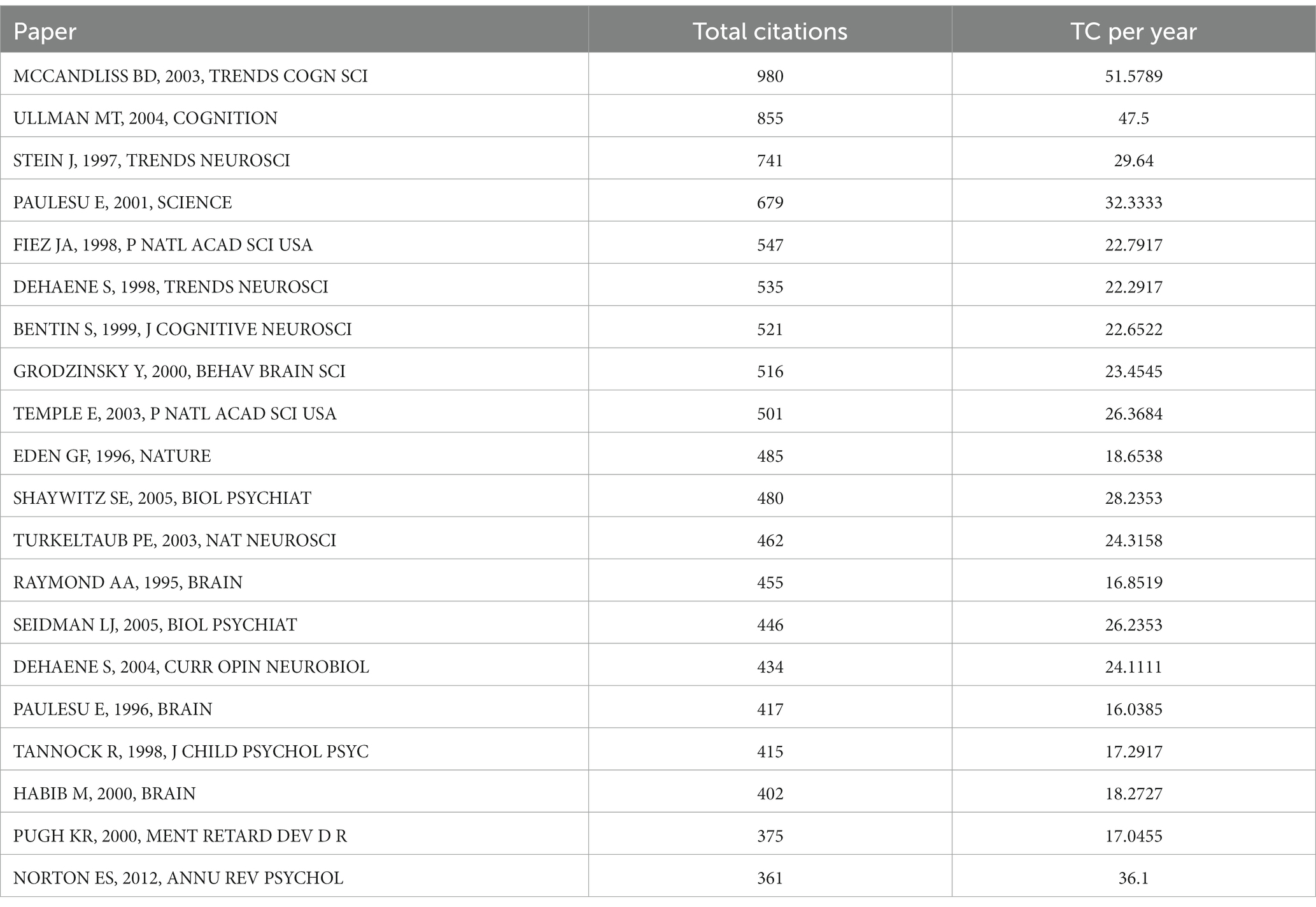
Table 1. Highly cited articles related to different measures that identify early predictors of LBLD.
3 Results
3.1 Analysis of quantity and annual trend of published literature
Table 2 illustrates the yearly productivity of predictors for developmental disorders research. The data indicate a slow growth in the research on the topic with only single-digit publications from 1991 to 1997 with a gap of 2 years as no publication appeared in 1992 and 1993. After 1997, almost a consistent growth with a little variation has been observed, with 2018 as the top year contributing the highest number of publications followed by 2015, 2016, and 2020. According to the citation analysis, 2003 was the year with the highest number of citations, followed by 2006 and 2005. The further analysis regarding U1 (Usage Count in Last 180 Days) placed 2021 at the first position, followed by 2018 and 2020. Likewise, the analysis regarding U2 (Usage Count Since 2013) placed 2015 at the top position, followed by 2013 and 2012.
3.2 Document type analysis
921 literature types were screened. Article was the most frequently published category of literature, accounting for (731, 79.37%) of the total literature. Review was the second largest category of literature type (153, 16.61%). Finally, Book Chapter (14, 1.52%), and Proceeding Paper (23, 2.49%) were the third and fourth largest literature type. The citation analysis also ranked “Article” at the first position, distantly followed by “Review.” Whereas the document type “Book Chapter” maintained the third position in securing citations. The analysis regarding U1 (Usage Count in Last 180 Days) and U2 (Usage Count Since 2013) also placed “Article” (Table 3).
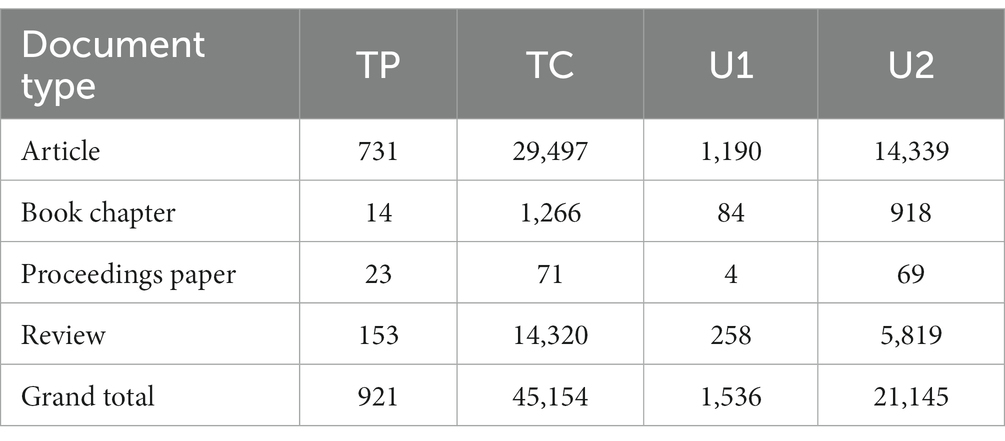
Table 3. The document types preferred by the researchers related to different measures that identify early predictors of LBLD.
3.3 Authorship pattern
Table 4 depicts the authorship patterns in the topic of the study ranging from one author to 49 author patterns. In the analysis, the three-author pattern emerged as the most preferred pattern with the highest number of publications, followed by four and two-authored patterns. The citation-wise analysis also ranked the three-author pattern at the top due to securing the highest number of citations, followed by two and single-author patterns. The further analysis regarding U1 (Usage Count in Last 180 Days) placed the two-author pattern at the first position, followed by three and five-author patterns. Likewise, the analysis regarding U2 (Usage Count Since 2013) placed the two-author pattern at the top position, followed by three and single-author patterns.
3.4 Most productive authors with impact
The most prolific researchers related to different measures that identify early predictors of LBLD with their impact have been portrayed in Table 5. The researcher “LYYTINEN H” emerged as the leading author contributing the highest number of publications on the topic, followed by “KUJALA T,” “LEPPANEN PHT,” and “FLETCHER JM.” The researcher “LYYTINEN H,” who leads all the researchers in publishing research on the topic, also ranked at the top due to the highest h-index, g-index, and m-index.
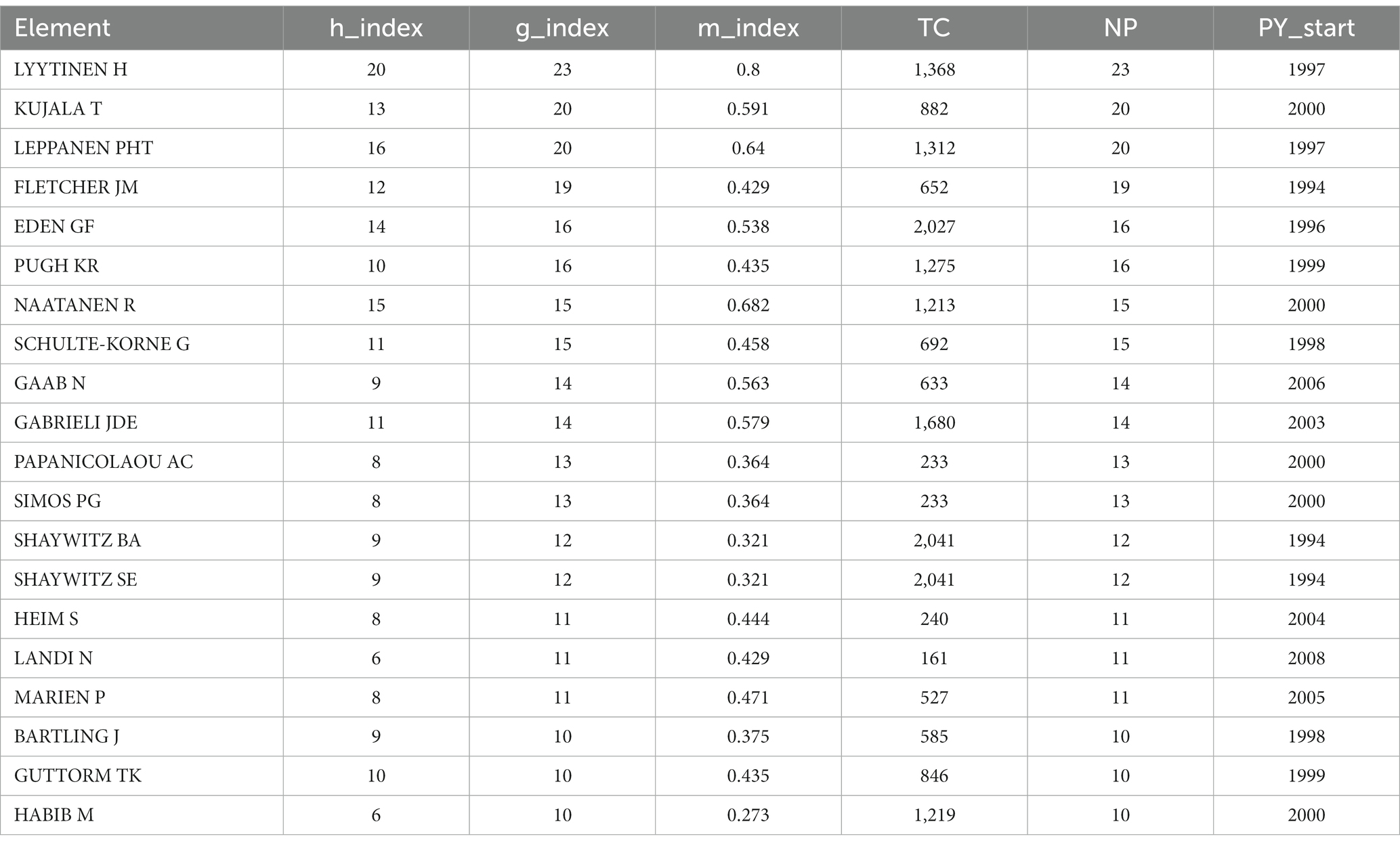
Table 5. Most productive authors with impact related to different measures that identify early predictors of LBLD.
3.5 Analysis of contributions of journals
The data in Table 6 highlight the most popular outlets for publishing research on the topic. According to the analysis, the most preferred journals for researchers to share their research are “Neuropsychologia,” “Neuroimage,” and “Frontiers in human neuroscience.” The journal “Neuroimage” emerges as the top journal in terms of citations, closely followed by “Neuropsychologia.” The data also disclose the journals with total cited publications (CP) and not cited publications (NCP). Out of 10 top journals, there are six journals, which have one publication with no citation. Likewise, the data also calculate the impact (TP/TC) of the journals. The journal “Neuroreport” which is at the bottom in terms of publications, stands at the top position in terms of impact, followed by “Cortex,” and “Neuroimage.”
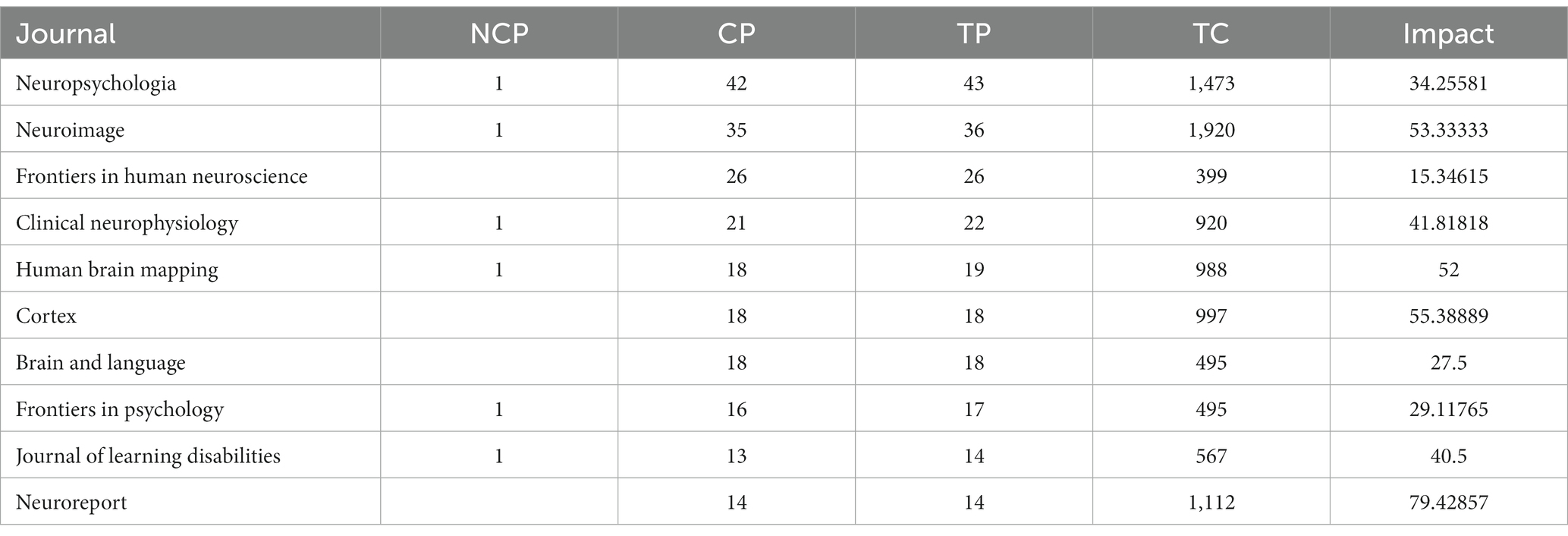
Table 6. Most productive journals related to different measures that identify early predictors of LBLD.
3.6 Top highly cited articles
Top highly cited articles are displayed in Table 1. The article “MCCANDLISS BD, 2003, TRENDS COGN SCI” secured the top position in the list by obtaining the highest number of citations, followed by “ULLMAN MT, 2004, COGNITION,” “STEIN J, 1997, TRENDS NEUROSCI” and “PAULESU E, 2001, SCIENCE.” The data also present per year total citation by dividing total citations by the difference between the publication year and the current year. The articles “MCCANDLISS BD, 2003, TRENDS COGN SCI,” “ULLMAN MT, 2004, COGNITION,” “NORTON ES, 2012, ANNU REV PSYCHOL,” and “PAULESU E, 2001, SCIENCE” maintained first, second, third, and fourth positions, respectively.
3.7 Most productive countries
Figure 1 depicts the research productivity of countries and continents on the topic. The United States emerged as the leading country globally and from North America in terms of the number of publications. The European countries seem as securing the remaining top four positions on the figure. The United Kingdom, Germany, Finland, and France showed a remarkable contribution and maintained second, third, and fourth positions. Canada from North America grabbed the fifth position. China emerged as the leading Asian country with the most publications from the continent, followed by Israel and Japan. Brazil emerged as the top country from South America. Three countries from Africa contributed only three publications, with one publication from each country.
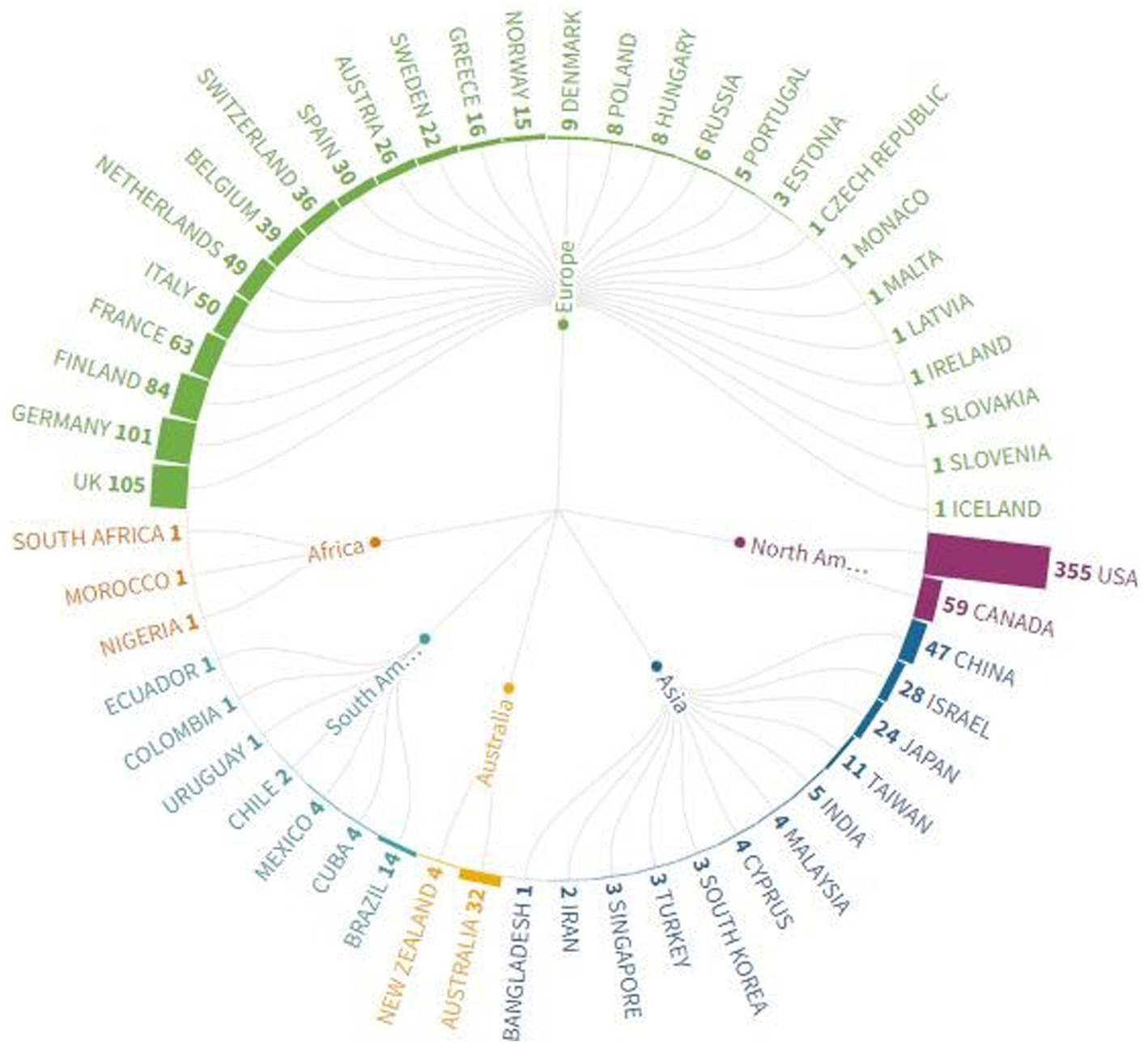
Figure 1. Most productive countries related to different measures that identify early predictors of LBLD.
3.8 Country production analysis
Figure 2 illustrates the collaboration among countries in publishing research related to different measures that identify early predictors of LBLD. The United States is the most prolific country in publishing research on the topic, with the highest collaboration with China, followed by the United Kingdom and Canada. The fourth highest collaborative activities can be witnessed on the map between Germany and Switzerland. Other vital collaborations are between the USA and Germany, the United Kingdom and Australia, the USA, and Israel.
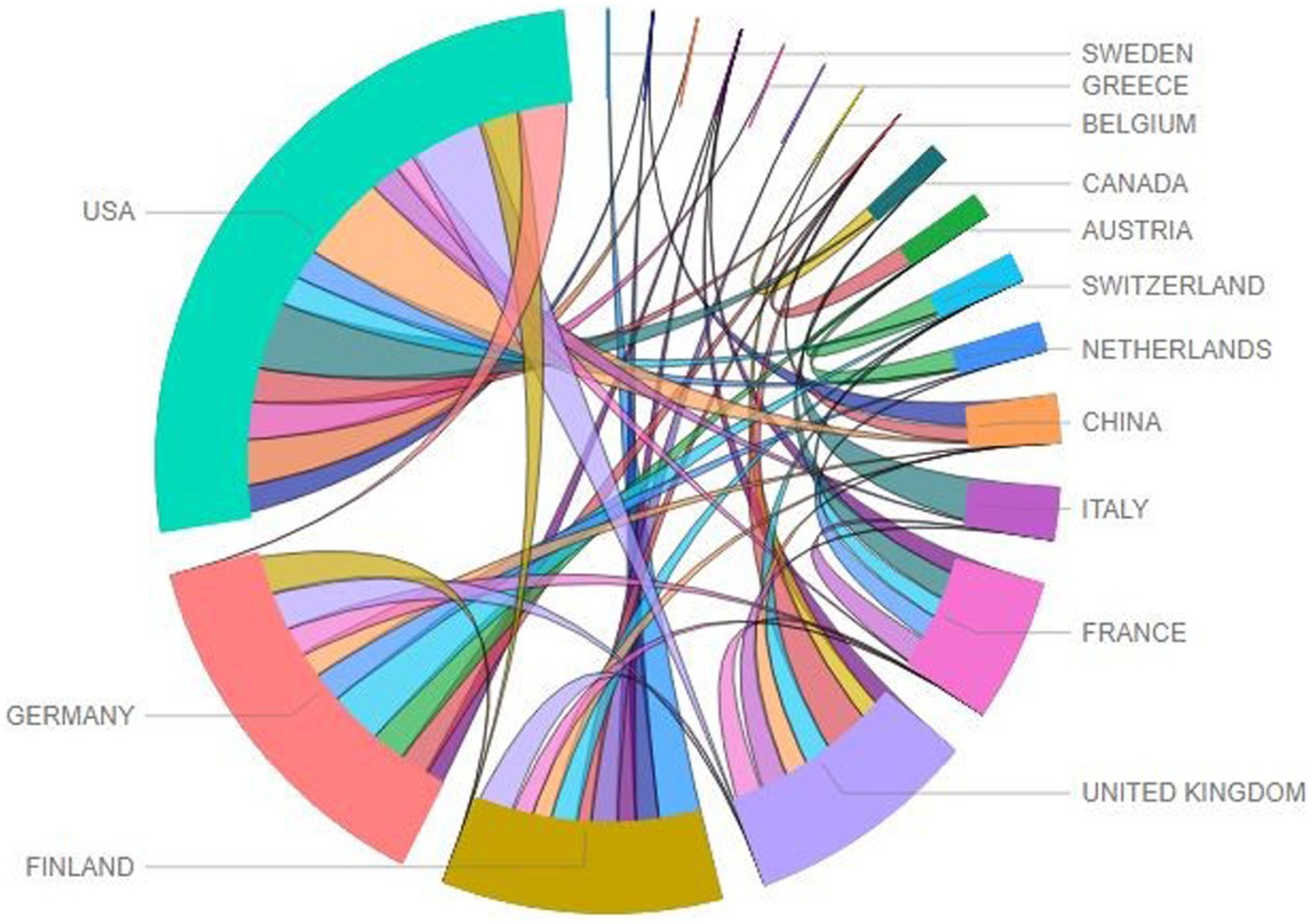
Figure 2. Country collaboration map related to different measures that identify early predictors of LBLD.
3.9 Organizations production analysis
Figure 3 portrays highly productive organizations from around the globe in publishing research related to different measures that identify early predictors of LBLD. Two organizations from Finland “University Jyvaskyla” and “University Helsinki” emerged as the most prolific organizations by producing 45 and 43 publications. From the USA, Harvard and Yale Universities contributed 36 publications each and maintained the third position. The University of Oxford appeared as the fourth most productive organization publishing research on the topic. No organization from Germany could appear in the top productive organization graph even though Germany is the third most productive country in the world. Likewise, only one organization from the United Kingdom, France, Canada, and China showed up in the most productive organizations map. However, these countries secured top positions in the most productive countries analysis.
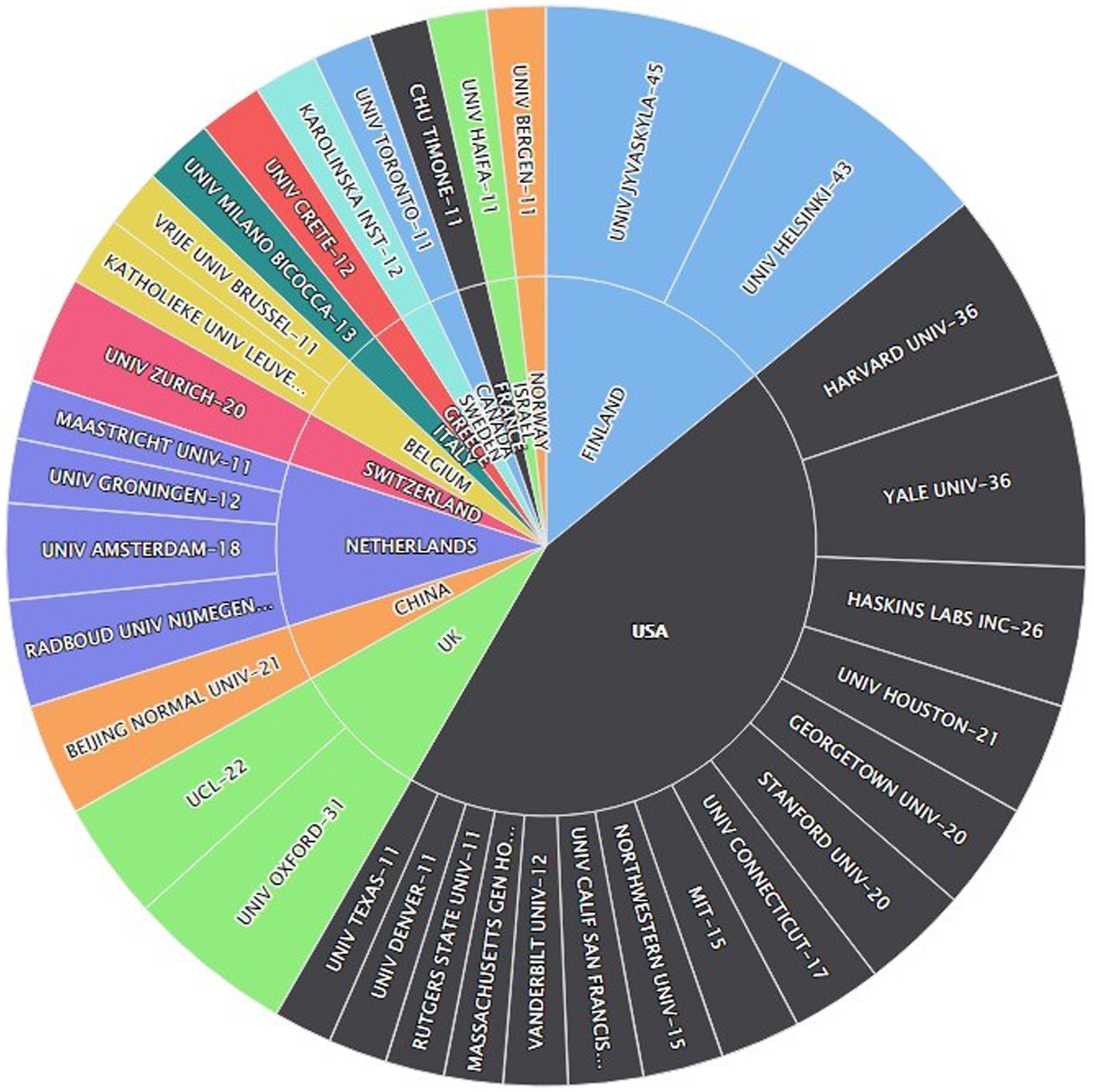
Figure 3. Most productive organizations related to different measures to identify early predictors of LBLD.
3.10 Analysis of author keywords
During the data analysis, 250 records were found without any author-supplied keywords. Therefore, to fill this gap, prominent keywords were identified from the titles and abstracts of the documents with the help of BiblioAnlytics software. Figure 4 describes the most frequently used keywords related to different measurement modalities that identify early predictors of LBLD. The keyword “children” emerged as the most frequently used keyword. Other prominent frequently used keywords on the graph include “dyslexia,” “brain,” “developmental dyslexia,” “brain imaging,” and “auditory processing.”
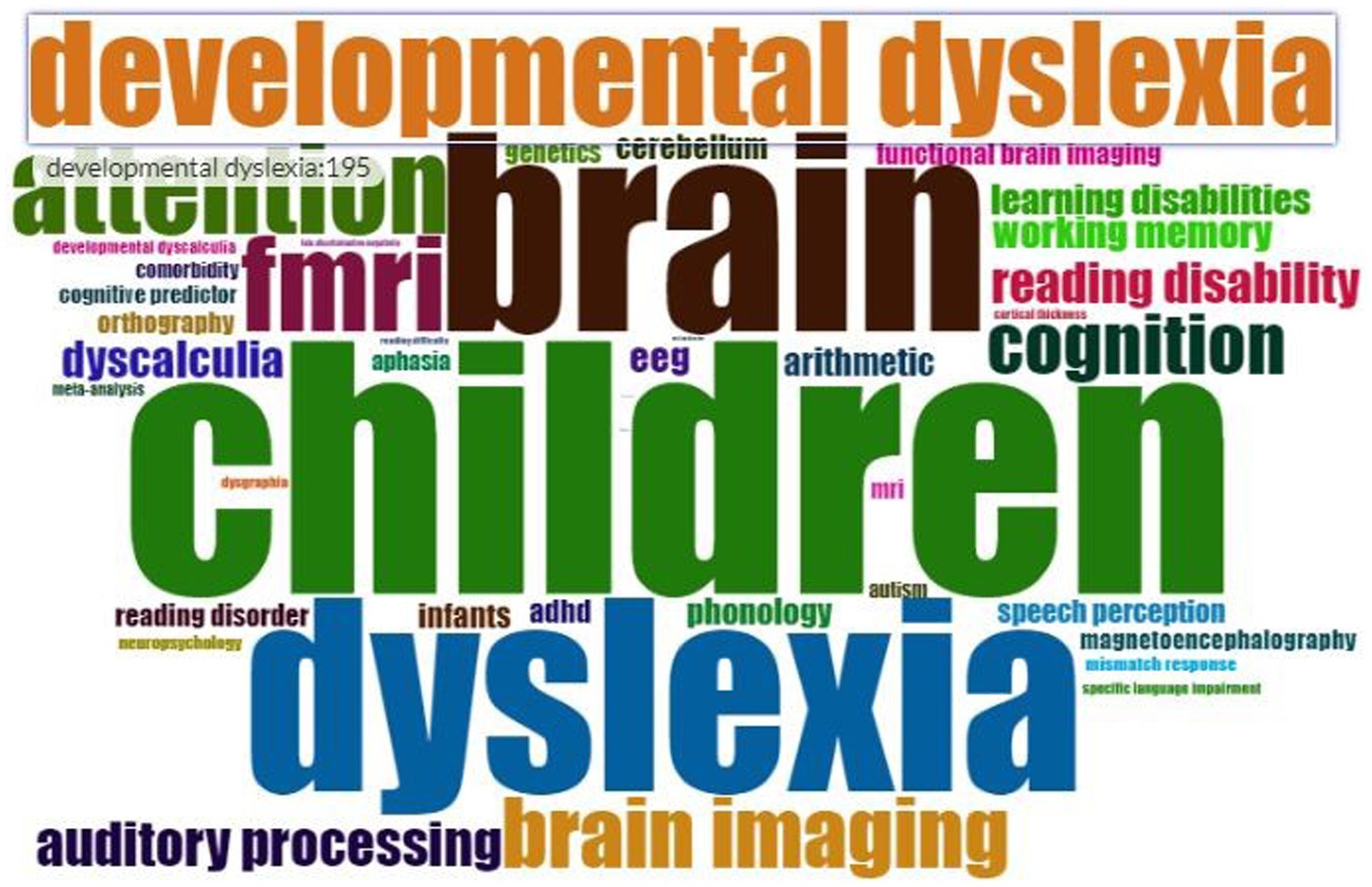
Figure 4. Word cloud of author keywords related to different measures that identify early predictors of LBLD.
3.11 Topic trends in research related to different measures that identify early predictors of LBLD
Figure 5 depicts topic trends in the LBDL predictors research. The analysis included the author keywords with a minimum frequency of five and at the least, appeared five times a year. The line represents an author keyword timeline, and the size of the bubble is proportional to the number of documents that used the keyword. The bubble is located at the midpoint of the timeline of the author keyword. The author keyword “children” appeared to be the most frequently used keyword between 2007 and 2017, having its mid-year in 2013. Other commonly used keywords included “neuroimaging,” “brain,” “dyslexia.” “developmental dyslexia,” and “fMRI,” each having mid-year at 2012. The keywords “cognitive predictor,” “comorbidity,” and “cortical thickness” were the most recently used author keywords. However, some keywords like “brain imaging,” “infants,” “magnetoencephalography,” “neuropsychology,” and “functional brain imaging” were not used in the current research.
3.12 Analysis of word growth
Figure 6 illustrates the growth of the author keywords over the years. The keyword “children” was used earlier by authors on the topic and consistently grew over the years. The second most prominent keyword was “neuroimaging,” used by the authors from the beginning to the time of this study with little variation in its usage. The keywords “brain” and “dyslexia” were the other consistently used author keywords.
3.13 Analysis of burst author keywords
Figure 7 divides the author keywords into four categories, “predictor, “disorder,” “method,” and “other.” The keyword “children” emerged as the most frequently used keyword, followed by “neuroimaging,” “brain,” “dyslexia,” “developmental dyslexia,” and “attention” belonged to the “other,” “method,” “disorder,” and “predictor” categories, respectively.
3.14 Analysis of quantity and annual trend of published literature
This study analyzes the correlation between the age of the articles (calculated from the year of publication) and the total citations obtained. Therefore, the normality of the data was tested. Due to the large size of the data, the Kolmogorov–Smirnov test of normality was applied. Since the value of p of both variables was less than 0.05 (p = 0.000), it showed that the distributions were not normal. For this reason, a non-parametric test, the Spearman Rank Correlation, was applied to determine the correlation between the two variables Table 7. A significant correlation between the two variables was found (r = 0.538, 0.000). The value of the Spearman Rank Correlation showed a moderate level of correlation between age and total citations obtained.
3.15 Reference analysis
The study further determines the correlation between the number of references (NR) cited and the total citations obtained by the articles. Again, due to the bigger size of the data, the Kolmogorov–Smirnov test of normality was applied to test the normality of the data. Since the value of p of both variables was less than 0.05 (p = 0.000), it showed that the distributions were not normal. Hence, a non-parametric test, the Spearman Rank Correlation, was applied Table 8. The analysis showed a significant correlation between the two variables (r = 0.078, 0.018). The value of the Spearman Rank Correlation showed a low level of correlation between the number of references cited and total citations obtained.
4 Discussion
Several previous bibliometric studies found that research on dyslexia, dyscalculia, and dysgraphia in the past 20 years mainly focused on its etiology (21–26). The current study reviewed the progress of research on multiple measurements modalities including neurocognitive, neurophysiological and neuroimaging for an early evaluation to identify LBLD predictors using Biblioanalytics. In a search of the WoS from 1991 to 25 October 2021, we found 962 cited studies were published in 10 different journals; Neuropsychologia, Neuroimage, and Frontiers in Human Neuroscience were the most preferred journals by the researchers for sharing their research. The journal Neuroimage emerged as the top journal in securing the highest number of citations, distantly followed by Neuropsychologia. Furthermore, the journal Neuroreport which was at the bottom in terms of publications, stood in the top position in terms of impact, followed by Cortex and Neuroimage. The current study on LBLDs will be useful to the research community for the following reasons; first, the current study not only forecasts the future of developmental dyslexia, dyscalculia, and dysgraphia research, but it also identifies associated research trends and gaps in the field. Second, existing findings provide important quantitative information about how both classic studies and recent advances in the field have contributed to a better understanding of LBLD. Third, the current study could help journal editors, funding agencies, and reviewers conduct more in-depth analyses of research articles and grant applications. According to previous findings, a total of 560 contributions related to dyscalculia were published during this period. Most of the articles (92.14%) were written in English as it is the most used language in global publications on dyscalculia. According to the findings, the top 15 authors in the field of dyscalculia wrote 174 (31.07%) of the 560 publications in this field (22). Moreover, during the period from 2015 to 2019, 7,623 authors contributed 1,677 research papers on dyslexia (24). Throughout this quarter, dyslexia-related papers were published. The preferred language of authors is found to be English 1,639 (97.73%) times, according to research on dyslexia.
Indeed, this analytic bibliometric study has the potential to contribute to the literature by adding new information regarding scientific interest in LBLD. However, as with other bibliometric analyses, some limitations must be considered when interpreting the presented findings. First, the search was limited to English-language literature, which makes the analysis incomplete as other language’s literature was not included. Second, biblioanalytics is a professional bibliometric analysis software tool that allows objective analysis arises from the researchers’ perspectives though different researchers may have different perspectives on the same content thus, its intrinsic subjectivity bias is unavoidable.
In conclusion, the etiology of LBLD is complex, and its early detection is crucial in clinical and basic research. Using bibliometric analysis, the trends in the development of different measurements modalities including neurocognitive, neurophysiological and neuroimaging for identifying LBLD predictors can be quantitatively viewed. We identified important publications, authors, journals, institutions, and countries based on 921 articles obtained from WoS, and then analyzed their relationships to reveal the research status of different measurements for the identification of LBLD predictors, as well as hotspots and research fronts. Early predictors of LBLDs would be useful as targets for specific prevention and intervention programs to be implemented at very young ages, which could have a significant clinical impact. A novel finding of neuroimaging predictors combined with neurocognitive and neuropsychological batteries may have implications for future research. In the literature there is abundant of studies about developmental dyslexia and its predictors. However, there is a lack of studies about the developmental dyscalculia and dysgraphia predictors which draws the attention to the importance of conducting research experiments about such disorders given its high prevalence and significant impacts on learning capabilities. Therefore, research on dyscalculia and dysgraphia as learning disabilities is required and would reveal multiple aspects that help in clinical applications by tailoring prevention and therapeutic intervention programs to be implemented at very young ages. Such clinical applications would improve the learning skills and competences that will enhance the academic performance of individuals with learning disabilities. Future research must provide a scientific definition of learning-based language disabilities in developmental dyscalculia and dysgraphia, finalize the neuroimaging, neurophysiological, and neurocognitive predictors, investigate causes and defects, expand research areas, and conduct exhaustive intervention research.
Data availability statement
The raw data supporting the conclusions of this article will be made available by the authors, without undue reservation.
Author contributions
TA and SB were responsible for the study ideation, design, and instructions. MS drafted the manuscript. Data collection, analysis and preparing figures and tables were carried out by MS, MK, and NS. JH participated in the revision of the manuscript. All authors contributed to the article and approved the submitted version.
Conflict of interest
The authors declare that the research was conducted in the absence of any commercial or financial relationships that could be construed as a potential conflict of interest.
Publisher’s note
All claims expressed in this article are solely those of the authors and do not necessarily represent those of their affiliated organizations, or those of the publisher, the editors and the reviewers. Any product that may be evaluated in this article, or claim that may be made by its manufacturer, is not guaranteed or endorsed by the publisher.
Abbreviations
LBLD, Language-based learning disability; DSM-5, Diagnostic and Statistical Manual of Mental Disorders (Fifth Edition); NR, Number of references; TC, Total citations; CP, Cited publications; NCP, Not cited publications; fMRI, Functional magnetic resonance imaging; MRI, Magnetic resonance imaging; DTI, Diffusion tensor imaging; EEG, Electroencephalogram; fNIRS, functional near-infrared spectroscopy; MSI, Magnetic source imaging; ERPs, Event related potentials.
Footnotes
References
1. American Speech-Language-Hearing Association (ASHA). Language-Based Learning Disabilities (Reading, Spelling, and Writing). Available at: http://www.asha.org/public/speech/disorders/LBLD.htm (2023). (Accessed 01 January 2011).
2. Schafer, JM, and Early, VS. Late Diagnosis: A Secondary Data Set Analysis of Language-Based Learning Disorders and Importance of Diagnosis Timing. Philadelphia, United States: Drexel University (2022).
3. Gordon-Pershey, M. Grammar and Syntax: Developing School-Age Children’s Oral and Written Language Skills. San Diego, CA: Plural Publishing (2022).
4. Al-Yagon, M, Cavendish, W, Cornoldi, C, Fawcett, AJ, Grünke, M, Hung, LY, et al. The proposed changes for DSM-5 for SLD and ADHD: International perspectives—Australia, Germany, Greece, India, Israel, Italy, Spain, Taiwan, United Kingdom, and United States. J Learn Disabil. (2013) 46:58–72. doi: 10.1177/0022219412464353
5. Altarac, M, and Saroha, E. Lifetime prevalence of learning disability among US children. Pediatrics. (2007) 119:S77–83. doi: 10.1542/peds.2006-2089L
6. Görker, I, Bozatli, L, Korkmazlar, Ü, Karadağ, MY, Ceylan, C, Söğüt, C, et al. The probable prevalence and sociodemographic characteristics of specific learning disorder in primary school children in Edirne. Arch Neuropsychiatr. (2017) 54:343–9. doi: 10.5152/npa.2016.18054
7. Svenaeus, F. Diagnosing mental disorders and saving the normal. Med Health Care Philos. (2013) 17:241–4. doi: 10.1007/s11019-013-9529-6
8. Torvinen, A. “I wanted to prove myself that I’m not stupid”: learning disabilities and language anxiety. Finland: University of Jyväskylä (2022).
9. Lee, KS. Higher-Order Cognitive Effects of Lead Exposure in Children and Adolescents Using the WPPSI-III, WISC-III, and WISC-IV. United Kingdom: Columbia University (2010).
10. DuPaul, GJ, Gormley, MJ, and Laracy, SD. Comorbidity of LD and ADHD: Implications of DSM-5 for assessment and treatment. J Learn Disabil. (2013) 46:43–51. doi: 10.1177/0022219412464351
11. O’Brien, G, and Pearson, J. Autism and learning disability. Autism. (2004) 8:125–40. doi: 10.1177/1362361304042718
12. Hours, C, Recasens, C, and Baleyte, JM. ASD and ADHD comorbidity: what are we talking about? Front Psych. (2022) 13:154. doi: 10.3389/fpsyt.2022.837424
13. Rosello, B, Berenguer, C, Baixauli, I, Colomer, C, and Miranda, A. ADHD symptoms and learning behaviors in children with ASD without intellectual disability. A mediation analysis of executive functions. PLoS One. (2018) 13:e0207286. doi: 10.1371/journal.pone.0207286
14. Cardillo, R, Vio, C, and Mammarella, IC. A comparison of local-global visuospatial processing in autism spectrum disorder, nonverbal learning disability, ADHD and typical development. Res Dev Disabil. (2020) 103:103682. doi: 10.1016/j.ridd.2020.103682
15. Langer, N, Benjamin, C, Becker, BL, and Gaab, N. Comorbidity of reading disabilities and ADHD: Structural and functional brain characteristics. Hum Brain Mapp. (2019) 40:2677–98. doi: 10.1002/hbm.24552
16. Wilmot, A, Hasking, P, Leitão, S, Hill, E, and Boyes, M. Understanding mental health in developmental dyslexia: a scoping review. Int J Environ Res Public Health. (2023) 20:1653. doi: 10.3390/ijerph20021653
17. Krön, B. Developmental dyscalculia as a disconnection syndrome, neurocognitive modeling and diagnosis. Psyarxiv [Preprint]. (2023).
18. McBride, C. Coping with Dyslexia, Dysgraphia and ADHD: A Global Perspective. New York, NY: Routledge (2019).
19. Yazdi, M, Mohammadpour, J, Li, H, Huang, HZ, Zarei, E, Pirbalouti, RG, et al. Fault tree analysis improvements: a bibliometric analysis and literature review. Qual Reliab Eng Int. (2023) 39:1639–59. doi: 10.1002/qre.3271
20. Tigre, FB, Curado, C, and Henriques, PL. Digital leadership: a bibliometric analysis. J Leadersh Org Stud. (2023) 30:40–70. doi: 10.1177/15480518221123132
21. Zhang, S, Fan, H, and Zhang, Y. The 100 top-cited studies on dyslexia research: a bibliometric analysis. Front Psych. (2021) 12:714627. doi: 10.3389/fpsyt.2021.714627
22. Chinnaraj, M, and Kavitha, A. Research output performance of dyscalculia (2011–2020): a bibliometric analysis. Libr Philos Pract. (2021)
23. Gupta, R, Gupta, B, Garg, AK, and Bansal, J. Dysgraphia: a scientometric assessment of global publications output during 2007-16. Int J Libr Inf Netw Knowl. (2018) 6:186–94. doi: 10.5530/jscires.6.3.26
24. Janaarthanan, P, and Nithyanandam, K. Mapping of research output on dyslexia: a scientometric study during 2015-2019. Libr Philos Pract. (2020)
25. Ram, S. Word blindness (dyslexia): a bibliometric analysis of global research in last fifty years. DESIDOC J Libr Inf Technol. (2018) 38:286. doi: 10.14429/djlit.38.4.12791
Keywords: early predictors, dyslexia, dyscalculia, dysgraphia, modalities
Citation: Alabbad M, Khan MA, Siddique N, Hassan JA, Bashir S and Abualait T (2023) Early predictors in language-based learning disabilities: a bibliometric analysis. Front. Psychiatry. 14:1229580. doi: 10.3389/fpsyt.2023.1229580
Edited by:
Stefan Borgwardt, University of Lübeck, GermanyReviewed by:
Maria Andreou, University of Peloponnese, GreeceAndy Wai Kan Yeung, University of Hong Kong, China
Copyright © 2023 Alabbad, Khan, Siddique, Hassan, Bashir and Abualait. This is an open-access article distributed under the terms of the Creative Commons Attribution License (CC BY). The use, distribution or reproduction in other forums is permitted, provided the original author(s) and the copyright owner(s) are credited and that the original publication in this journal is cited, in accordance with accepted academic practice. No use, distribution or reproduction is permitted which does not comply with these terms.
*Correspondence: Turki Abualait, tsabualait@iau.edu.sa
 Maryam Alabbad
Maryam Alabbad Muhammad Ajmal Khan
Muhammad Ajmal Khan Nadeem Siddique4
Nadeem Siddique4 Shahid Bashir
Shahid Bashir Turki Abualait
Turki Abualait